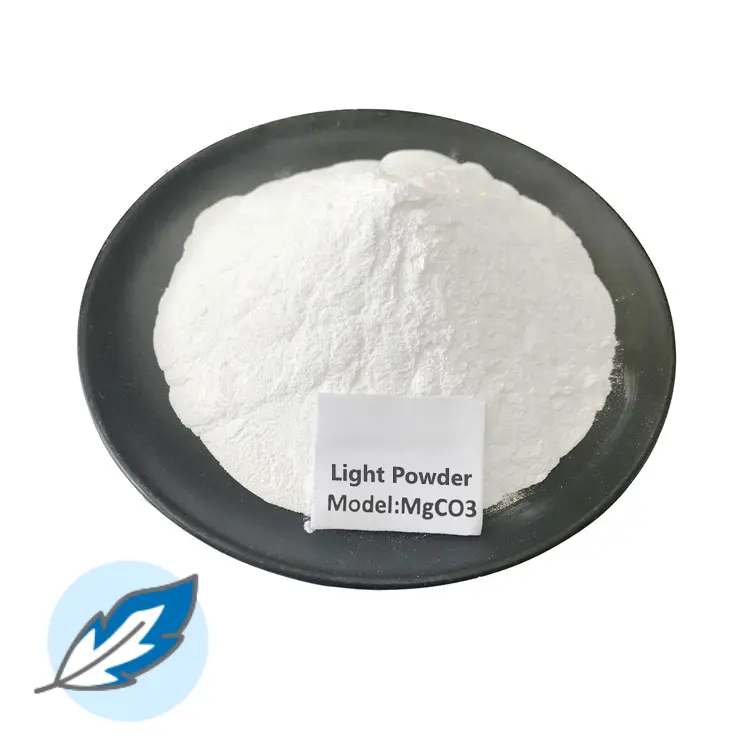HG/T 2959-2010 Industrial Hydrated Basic Magnesium Carbonate
Scope
This standard specifies the requirements, test methods, inspection rules, marking, labeling, packaging, transportation and storage of industrial hydrated basic magnesium carbonate.
This standard applies to industrial hydrated basic magnesium carbonate made from dolomite, brine and sodium carbonate. This product is mainly used in rubber, thermal insulation materials, plastics and pigment industries as a filler and reinforcing agent.
Molecular formula
Molecular formula: xMgCO3•yMg(OH)2•zH2O
Requirements
Appearance: white light powder.
Industrial hydrated basic magnesium carbonate shall meet the requirements of Table 1.
Test method
Determination of chloride content
Method summary
In an acidic ethanol-water solution, a silver electrode is used as the measuring electrode, a double salt bridge calomel electrode is used as the reference electrode, and a *standard titration solution is used for titration. The reaction end point is determined by the potential jump.
Reagents
Nitric acid solution: 1mol/L;
Sodium hydroxide solution: 1mol/L.
Other solutions are in accordance with Chapter 4 of GB/T 3050-2000.
GB/T 3050-2000 General method for determination of chloride content in inorganic chemical products Potentiometric titration
Instruments and equipment
According to Chapter 5 of GB/T 3050-2000.
GB/T 3050-2000 General method for determination of chloride content in inorganic chemical products Potentiometric titration
Analysis steps
Weigh about 15g of sample, accurate to 0.01g, place in a 50mL beaker, add a small amount of water to moisten the sample, add nitric acid solution (2+3) until the sample is completely dissolved, add 2~3 drops of bromophenol blue indicator, if the test solution is yellow, add sodium hydroxide solution until blue, then add nitric acid solution until it is just yellow, and then add 2~3 drops in excess. If the test solution is blue, add nitric acid solution until it turns yellow and then add 2 to 3 drops of excess. Add 30mL of 95% ethanol, and the following operations are as described in GB/T 3050-2000, Section 4.6, from “… put in the electromagnetic stirrer” to “… record the starting potential value”. Then, titrate with *standard titration solution [c(AgNO3)≈0.01mol/L], and add 0.1mL at a time when approaching the end point. The following operations are as described in GB/T 3050-2000, Section 4.6, from “record the total volume after each addition of *standard solution…”.
The blank test is to add 4mL of nitric acid solution to another 50mL beaker, and adjust the pH value to neutral with sodium hydroxide solution (check with pH test paper). The following operations start from “add 1 drop of bromophenol blue indicator…” and are handled in the same way as the test solution.
GB/T 3050-2000 General method for determination of chloride content in inorganic chemical products Potentiometric titration method
Result calculation
The chloride content is calculated as the mass fraction of chlorine (Cl) ω6, expressed in %, and calculated according to formula (6):
Wherein:
V1 is the value of the test solution consumed in titration * the volume of the standard titration solution, in milliliters (mL);
V0 is the value of the blank solution consumed in titration * the volume of the standard titration solution, in milliliters (mL);
c is the exact value of the concentration of the standard titration solution, in moles per liter (mol/L);
m is the value of the sample mass, in grams (g);
M is the value of the molar mass of chlorine (Cl), in grams per mole (g/mol) (M=35.45).
The arithmetic mean of the parallel determination results is taken as the determination result, and the difference between the two parallel determination results is not greater than 0.003%.

